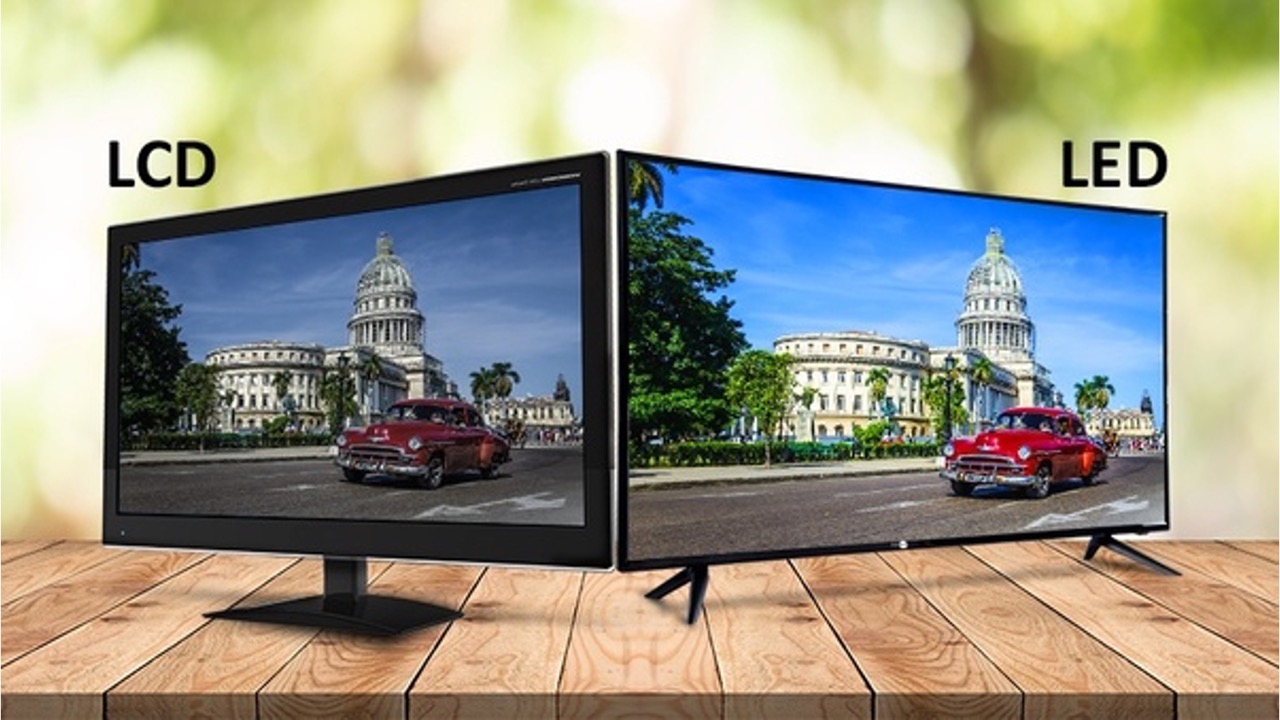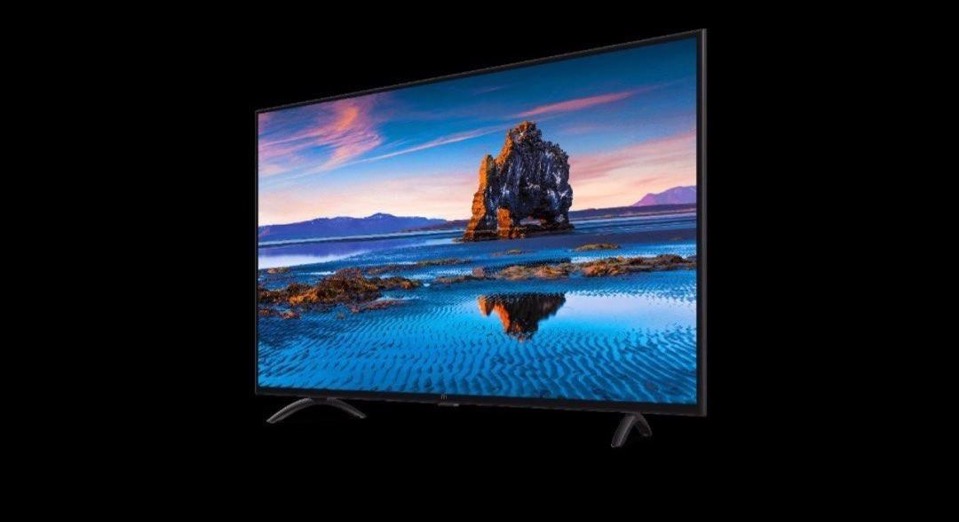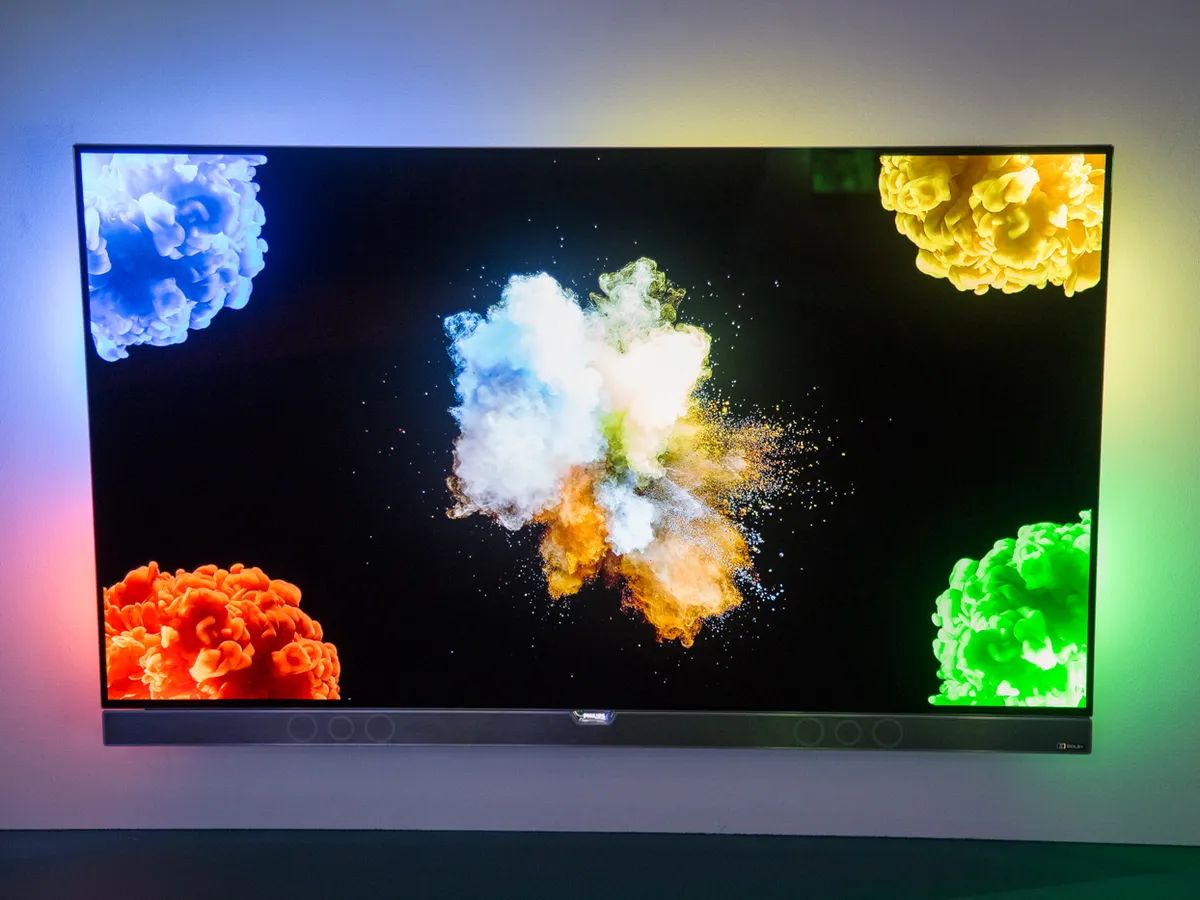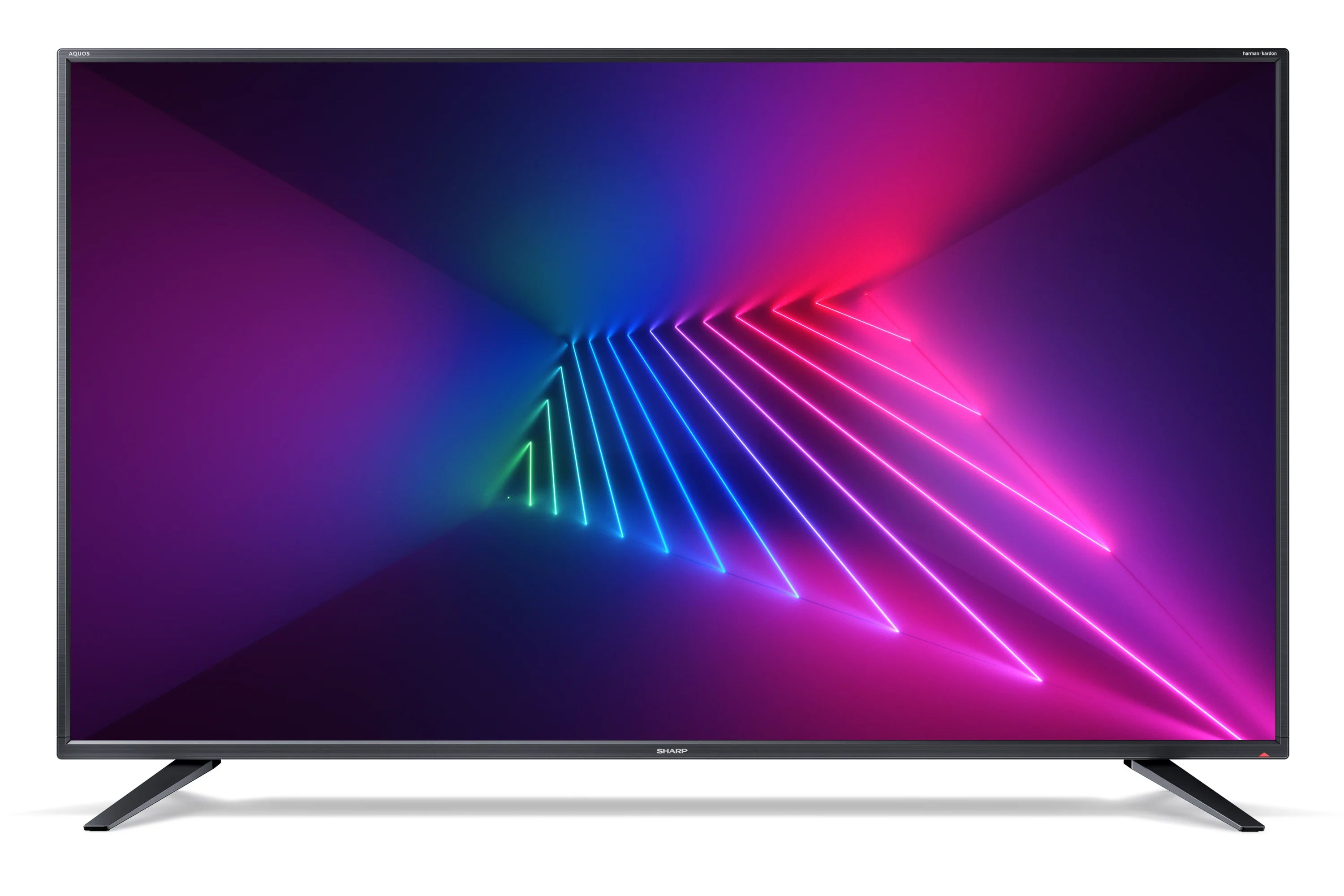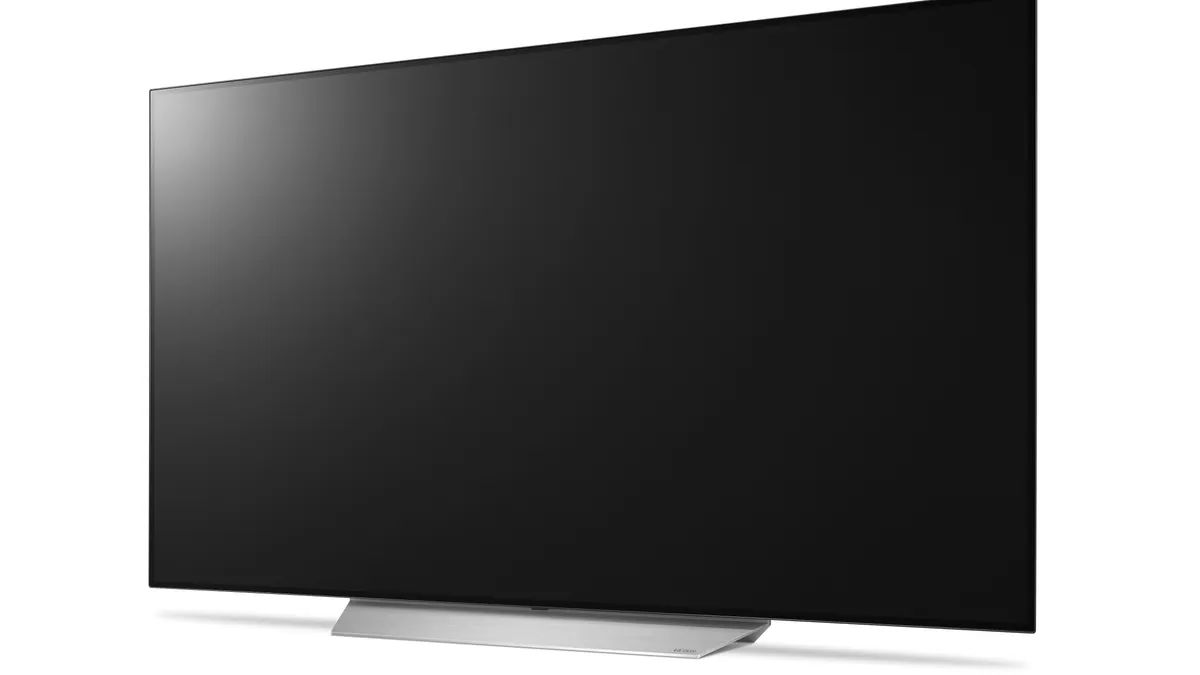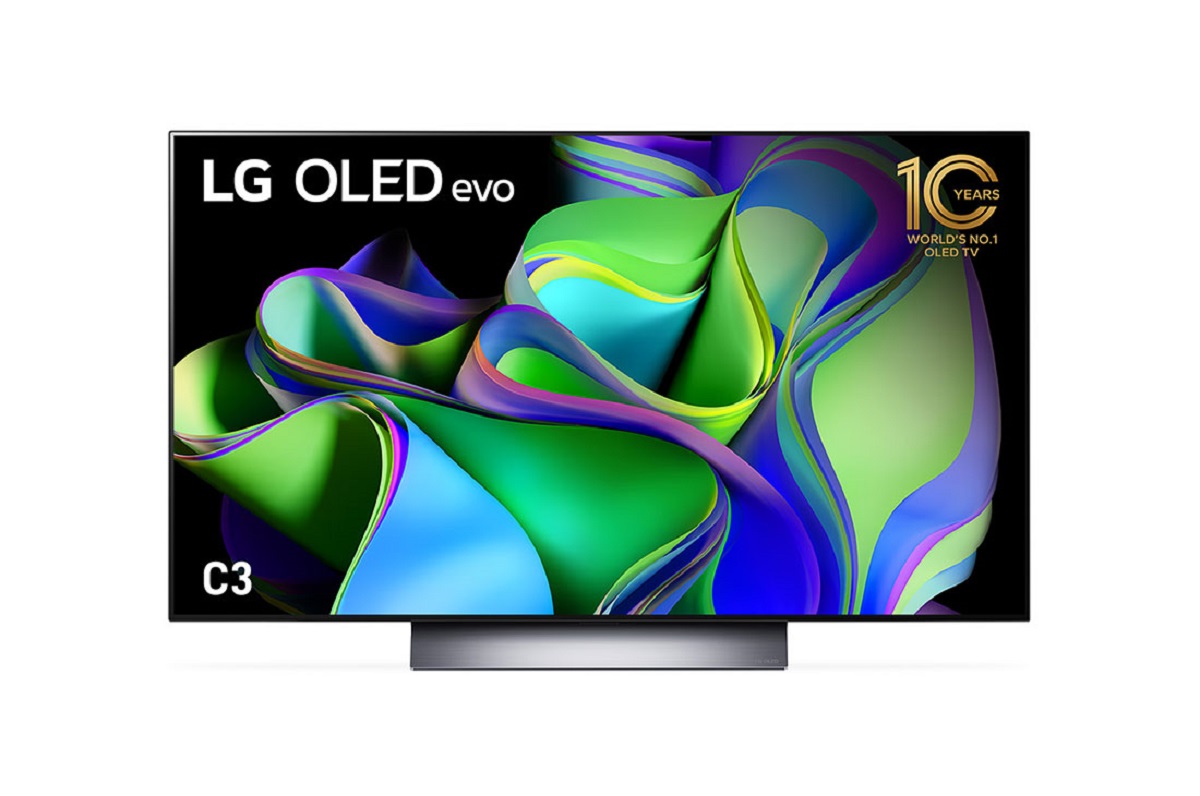Introduction
Welcome to the world of entertainment technology, where your choice of a television can make all the difference in your viewing experience. With so many options available, it can be a daunting task to choose between different types of TVs. Two popular choices in the market today are LCD and LED TVs. These two technologies have revolutionized the way we watch television, but what sets them apart?
In this article, we will delve into the differences between LCD and LED TVs and answer the ever-present question: Which is better? We will compare various aspects of these TVs, such as picture quality, energy efficiency, thickness and design, viewing angles, black levels and contrast ratio, and finally, price. By the end of this article, you will have a clear understanding of the strengths and weaknesses of each technology, empowering you to make an informed decision.
But first, let’s understand what LCD and LED TVs actually are. LCD stands for Liquid Crystal Display and is a panel technology that uses liquid crystals to create images. On the other hand, LED stands for Light Emitting Diode, which refers to the type of backlighting used in the TV. Now that we have clarified the basic definitions, let’s dive into the differences between these two types of TVs.
Definition of LCD and LED TV
To understand the differences between LCD and LED TVs, it’s essential to have a clear definition of each technology.
LCD, or Liquid Crystal Display, is a panel technology used in televisions. It consists of a layer of liquid crystals sandwiched between two layers of glass. These liquid crystals can be manipulated to control the amount and intensity of light passing through them, which allows for the creation of images on the screen.
On the other hand, LED, or Light Emitting Diode, refers to the type of backlighting used in a television. In an LED TV, the display panel itself is made up of liquid crystals, just like an LCD TV. The difference lies in the type of backlighting used. Instead of traditional CCFL (Cold Cathode Fluorescent Lamp) backlighting, LED TVs use an array or grid of small light-emitting diodes as the primary source of illumination.
This distinction in backlight technology leads to some significant differences between LCD and LED TVs. While both types use liquid crystal display panels, the primary difference lies in the way the panels are illuminated.
Traditional LCD TVs rely on CCFL tubes placed behind the panel to light up the screen. These tubes emit a consistent level of backlighting across the screen, but they are limited in their ability to control individual areas of brightness. As a result, LCD TVs often suffer from issues such as lower contrast ratios, limited black levels, and narrower color gamuts.
LED TVs, on the other hand, use an array of light-emitting diodes as the backlight source. These LEDs are capable of independent control, allowing for more precise lighting control and better dynamic range. This technology enables LED TVs to produce deeper blacks, higher contrast ratios, and a wider color gamut compared to traditional LCD TVs.
It’s important to note that LED TVs are essentially a type of LCD TV with a different backlighting method. The term “LED TV” is used to distinguish this newer backlighting technology from the older CCFL tube backlighting used in traditional LCD TVs. So, when we refer to LED TVs, we are still talking about an LCD panel with LED backlighting.
Now that we understand the basic definitions of LCD and LED TVs, let’s explore the differences between these two technologies in more detail.
Differences Between LCD and LED TV
While LCD and LED TVs are both based on liquid crystal display technology, there are several key differences that set them apart. Let’s take a closer look at these differences:
1. Backlighting: The most significant difference between LCD and LED TVs lies in their backlighting methods. LCD TVs use CCFL (Cold Cathode Fluorescent Lamp) tubes as the backlight source, while LED TVs use an array of light-emitting diodes (LEDs). LED backlighting provides more precise lighting control, resulting in better contrast ratios and deeper blacks.
2. Energy Efficiency: LED TVs are generally more energy-efficient compared to LCD TVs. LED backlighting consumes less power, leading to lower electricity bills and reduced environmental impact.
3. Thickness and Design: LED TVs are typically thinner and more lightweight than LCD TVs. The smaller size of LED backlighting allows for sleek and slim designs. LCD TVs with CCFL backlighting tend to be bulkier due to the larger size of the CCFL tubes.
4. Viewing Angles: LCD TVs tend to have narrower viewing angles compared to LED TVs. This means that the image quality may degrade when viewing the screen from off-center positions. LED TVs offer wider viewing angles, allowing for a consistent and clear image even from different viewing positions.
5. Black Levels and Contrast Ratio: LED backlighting provides superior black levels and contrast ratios compared to CCFL backlighting. LED TVs can produce deeper blacks and a wider range of shades between black and white. This results in more detailed and vibrant images, with better overall picture quality.
6. Price: In general, LED TVs tend to be more expensive than LCD TVs with CCFL backlighting. However, with advancements in technology and increased availability, the price gap between the two types has narrowed in recent years.
It’s important to note that while LED TVs offer several advantages over LCD TVs, there are still instances where LCD panels with CCFL backlighting may be preferred. For example, in certain commercial applications where color accuracy and image quality are crucial, high-end professional LCD monitors with CCFL backlighting are still widely used.
Now that we have explored the differences between LCD and LED TVs, let’s move on to comparing their picture quality in the next section.
Comparison of Picture Quality
When it comes to picture quality, both LCD and LED TVs have their strengths and weaknesses. Let’s compare their picture quality characteristics:
1. Black Levels: LED TVs generally offer better black levels compared to LCD TVs. The individual control of LED backlighting enables the TV to produce deeper blacks, resulting in more contrast and better overall image quality. LCD TVs with CCFL backlighting often struggle to achieve the same level of blackness.
2. Contrast Ratio: The contrast ratio measures the difference between the brightest and darkest parts of an image. LED TVs typically have higher contrast ratios, as they can dim or turn off specific areas of the backlight independently. This leads to a more dynamic and visually appealing image, with greater detail in shaded or darker areas.
3. Color Accuracy: Both LCD and LED TVs can achieve excellent color accuracy when calibrated properly. However, LED TVs usually have a wider color gamut, meaning they are capable of displaying a broader range of colors. This can result in more vibrant and lifelike images, particularly in scenes with bright and saturated colors.
4. Motion Blur: LCD TVs with fast response times can handle fast-moving scenes better, as they minimize motion blur. LED TVs, being a type of LCD TV, can also offer good motion handling. However, certain LED TVs with slower response times may exhibit motion blur, resulting in less smooth motion during action-packed scenes or sports broadcasts.
5. Uniformity: LCD TVs with CCFL backlighting can sometimes suffer from issues like uneven backlight distribution, resulting in areas of the screen appearing brighter or dimmer than others. LED TVs have improved uniformity due to their more precise and controlled backlighting, leading to a more consistent picture across the entire screen.
6. Overall Picture Quality: While LED TVs generally offer better picture quality in terms of black levels, contrast ratio, color accuracy, and uniformity, it’s important to note that not all LED TVs are created equal. Factors such as the panel type, backlighting technology (edge-lit or full-array), and image processing capabilities can vary among LED TVs, impacting their overall picture quality.
Ultimately, the picture quality of both LCD and LED TVs can be influenced by individual model specifications and personal preferences. It’s recommended to compare different models, read reviews, and consider the specific features and enhancements offered by each TV before making a decision.
Now that we have examined the picture quality differences between LCD and LED TVs, let’s move on to comparing their energy efficiency in the next section.
Comparison of Energy Efficiency
Energy efficiency is an important consideration when choosing a TV, as it not only impacts your electricity bills but also contributes to environmental sustainability. Let’s compare the energy efficiency characteristics of LCD and LED TVs:
1. Power Consumption: LED TVs are generally more energy-efficient than LCD TVs. This is primarily due to the difference in backlighting technology. LED TVs use light-emitting diodes as the backlight source, which consumes less power compared to the CCFL (Cold Cathode Fluorescent Lamp) tubes used in LCD TVs.
2. Energy Star Rating: LED TVs often carry the Energy Star rating, which signifies their energy efficiency. Energy Star certified TVs meet strict energy efficiency guidelines set by the Environmental Protection Agency (EPA) and Department of Energy (DOE). This rating helps consumers identify TVs that consume less energy and contribute to reducing greenhouse gas emissions.
3. Standby Power: LED TVs generally have lower standby power consumption compared to LCD TVs. Standby power, also known as vampire power, refers to the energy consumed by a TV when it is turned off but still plugged into a power source. LED TVs typically incorporate power-saving features that minimize standby power consumption, reducing wasted energy over time.
4. Lifespan: LED TVs generally have a longer lifespan compared to LCD TVs. The LED backlighting technology used in LED TVs can last significantly longer than the CCFL tubes in LCD TVs. This means that you may not need to replace an LED TV as often, reducing the overall environmental impact and electronic waste.
5. Environmental Impact: The energy efficiency of LED TVs translates to a reduced environmental impact. By consuming less power, LED TVs contribute to lower carbon dioxide emissions and help conserve natural resources. Choosing an energy-efficient TV can play a small but important role in promoting environmental sustainability.
It’s worth noting that while LED TVs are generally more energy-efficient, there can be variations in energy consumption among different models and sizes. Larger screen sizes and additional features such as higher refresh rates or advanced image processing can influence power consumption. Therefore, it’s advisable to check the energy ratings and specifications of specific models to get accurate information about their energy efficiency.
Now that we have compared the energy efficiency of LCD and LED TVs, let’s move on to discussing the differences in thickness and design.
Comparison of Thickness and Design
When it comes to the physical appearance and design of TVs, both LCD and LED TVs offer distinct advantages. Let’s compare the thickness and design characteristics of these two types:
1. Thickness: LED TVs are generally thinner and more lightweight compared to LCD TVs. The use of LED backlighting allows for a slimmer design since LEDs are smaller and can be arranged in a more compact manner. This thin profile not only enhances the aesthetics of the TV but also makes it easier to mount on the wall or fit into smaller spaces.
2. Bezel Size: LED TVs often have smaller bezels (the frame around the screen) compared to LCD TVs. With thinner bezels, the focus is on the screen, providing a more immersive viewing experience. Additionally, smaller bezels allow for a more seamless multi-display setup, perfect for gaming or creating a home theater environment.
3. Flexibility: LED backlighting offers more design flexibility compared to the traditional CCFL backlighting used in LCD TVs. LED backlights can be shaped and positioned differently, allowing manufacturers to explore various design options. This flexibility leads to innovative and eye-catching TV designs that can blend seamlessly with your home décor.
4. Weight: LED TVs are generally lighter in weight compared to LCD TVs. This lightweight design makes them easier to handle and mount, reducing the strain and effort required during installation. It also provides more versatility in terms of placement options, whether it’s on a TV stand or mounted on the wall.
5. Overall Aesthetics: The slim profile and sleek design of LED TVs contribute to a more modern and stylish appearance. The combination of thinner screens, smaller bezels, and minimalist designs adds a touch of elegance to any living space. LCD TVs, while still offering good picture quality, tend to have bulkier designs due to the larger CCFL backlighting tubes.
It’s important to note that while LED TVs generally have thinner and more aesthetically pleasing designs, there can be variations among different models and manufacturers. It’s always a good idea to consider your personal preferences and the overall aesthetic of your living room or entertainment area when choosing a TV.
Now that we have compared the thickness and design aspects of LCD and LED TVs, let’s move on to discussing the differences in viewing angles.
Comparison of Viewing Angles
Viewing angles refer to the range within which you can comfortably see the screen without any significant loss in picture quality. The differences in viewing angles can affect the overall viewing experience. Let’s compare the viewing angles of LCD and LED TVs:
1. LCD TVs: Traditional LCD TVs have narrower viewing angles compared to LED TVs. When viewing an LCD TV from off-center positions, the image quality may degrade. This can result in a decrease in brightness, color distortion, and reduced contrast, making it less enjoyable for viewers who are not directly facing the screen. The optimal viewing experience for LCD TVs is achieved when the viewer is seated in the center of the screen.
2. LED TVs: LED TVs, being a type of LCD TV, can offer wider viewing angles compared to traditional LCD TVs with CCFL backlighting. The use of LED backlighting helps in maintaining better picture quality even when viewing the screen from off-center angles. Viewers seated at wider angles to the screen can still enjoy a clear and vibrant image with minimal color distortion and loss of contrast.
Wide viewing angles are especially beneficial for larger TVs or when multiple people are watching from different positions in the room. LED TVs with improved viewing angles allow everyone in the room to have a consistent and enjoyable viewing experience, regardless of their seating arrangement.
It’s important to note that while LED TVs have wider viewing angles compared to LCD TVs, there can be variations in viewing angle performance among different models and manufacturers. It’s recommended to check the specifications and reviews of specific TVs to understand their performance in terms of viewing angles.
Now that we have compared the differences in viewing angles, let’s move on to discussing the differences in black levels and contrast ratio.
Comparison of Black Levels and Contrast Ratio
Black levels and contrast ratio are key factors that can greatly impact the quality and depth of the images displayed on a TV. Let’s compare the black levels and contrast ratio of LCD and LED TVs:
1. Black Levels: LED TVs generally offer better black levels compared to LCD TVs. The use of LED backlighting allows for individual control of the LEDs, enabling them to be completely turned off in areas that require black pixels. This results in deeper and more accurate blacks, making the overall image appear more vibrant and lifelike. In contrast, LCD TVs with CCFL backlighting struggle to achieve the same level of darkness, resulting in less impressive black levels.
2. Contrast Ratio: The contrast ratio is a measure of the difference between the brightest and darkest parts of an image. LED TVs typically have higher contrast ratios due to their superior black levels. The ability to display deep blacks alongside bright whites leads to a more visually striking image with greater detail and depth. LCD TVs with CCFL backlighting may have lower contrast ratios, limiting the overall dynamic range and impact of the displayed content.
3. Detail in Shaded Areas: LED TVs with better black level performance and higher contrast ratios exhibit greater detail in shaded or darker areas of the image. This allows for more realistic and immersive viewing experiences, particularly in scenes that involve shadows, night scenes, or movies with subtle lighting techniques. LCD TVs, while still capable of producing decent images, may not achieve the same level of detail and depth in these areas.
4. Overall Picture Quality: LED TVs, with their superior black levels and contrast ratios, tend to offer better overall picture quality compared to LCD TVs. The combination of deep blacks, bright whites, and a wide range of shades in between leads to more vibrant and dynamic visuals. This is especially noticeable during high-quality content like movies or when watching HDR (High Dynamic Range) content that demands more accurate black levels and contrast performance.
It’s important to keep in mind that advancements in LCD technology have led to improvements in black levels and contrast ratios in certain higher-end LCD TVs. However, LED TVs remain the go-to choice for those seeking superior black levels, contrast ratios, and overall picture quality.
Now that we have compared the differences in black levels and contrast ratio, let’s move on to discussing the differences in price.
Comparison of Price
Price is a significant factor to consider when choosing a TV, as it can greatly impact your budget. Let’s compare the price differences between LCD and LED TVs:
1. LED TVs: LED TVs are generally priced higher than LCD TVs. This is primarily due to the advanced LED backlighting technology used in these TVs, which offers better picture quality and energy efficiency. LED TVs also tend to come with additional features and functionalities, such as smart TV capabilities and higher refresh rates, which contribute to their higher price point.
2. LCD TVs: LCD TVs, especially those with CCFL backlighting, are typically less expensive compared to LED TVs. The older technology used in these TVs and the lower level of image quality and energy efficiency contribute to their lower price range. However, as LED technology becomes more prevalent and standard, the price gap between LCD and LED TVs has considerably narrowed.
3. Screen Size Impact: The price difference between LCD and LED TVs can vary based on the screen size. Generally, as the screen size increases, the price difference becomes more apparent. Larger LED TVs tend to have a higher price tag compared to LCD TVs of the same size. However, price variations are also influenced by other factors such as brand, model, additional features, and market demand.
It’s important to note that price should not be the sole factor in choosing a TV. While LED TVs may have a higher price, they often offer better picture quality, energy efficiency, and overall performance compared to LCD TVs. However, if you have a limited budget or specific requirements that don’t necessarily demand the highest level of picture quality, an LCD TV may still provide satisfactory performance at a more affordable price point.
Before making a decision, it’s recommended to compare prices, features, and customer reviews of multiple TVs to find the best balance between price and performance that suits your needs.
Now that we have compared the price differences between LCD and LED TVs, let’s conclude our analysis in the next section.
Conclusion
After comparing the various aspects of LCD and LED TVs, it is clear that both technologies have their strengths and weaknesses. Understanding these differences can help you make an informed decision when choosing the right TV for your needs. Here’s a recap:
LCD TVs, with their CCFL backlighting, offer decent picture quality at a more affordable price point. They can be a suitable choice for those on a budget or looking for a secondary TV. However, LCD TVs tend to have narrower viewing angles, lower contrast ratios, and less impressive black levels compared to their LED counterparts.
On the other hand, LED TVs, with their LED backlighting technology, provide superior picture quality, including deeper blacks, higher contrast ratios, and wider color gamut. LED TVs offer more energy-efficient operation, sleeker designs, and wider viewing angles, making them ideal for those seeking a more immersive and visually captivating viewing experience.
It’s worth noting that technology continues to evolve, and the line between LCD and LED TVs has become blurred. Some LCD TVs now incorporate LED backlighting, offering improved performance and bridging the gap between the two technologies. Additionally, advancements in LED technology, such as local dimming and quantum dot displays, have further improved picture quality and color accuracy.
Ultimately, the choice between LCD and LED TVs depends on your specific needs, preferences, and budget. Consider factors such as picture quality, energy efficiency, viewing angles, design, and price. It’s also advisable to compare different models from reputable brands, read customer reviews, and seek professional advice if needed.
Whichever technology you choose, be sure to take proper care of your TV by following manufacturer’s guidelines, ensuring appropriate placement and ventilation, and adjusting picture settings for optimal performance.
We hope this article has provided valuable insights into the differences between LCD and LED TVs, helping you make an informed decision and enhancing your overall entertainment experience.







